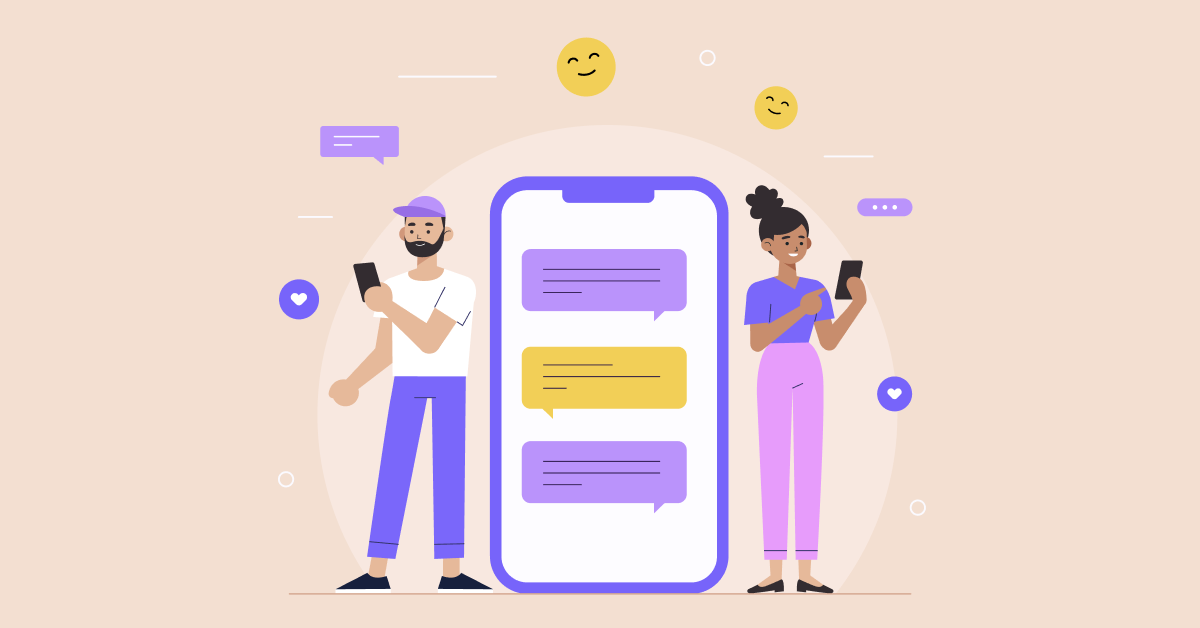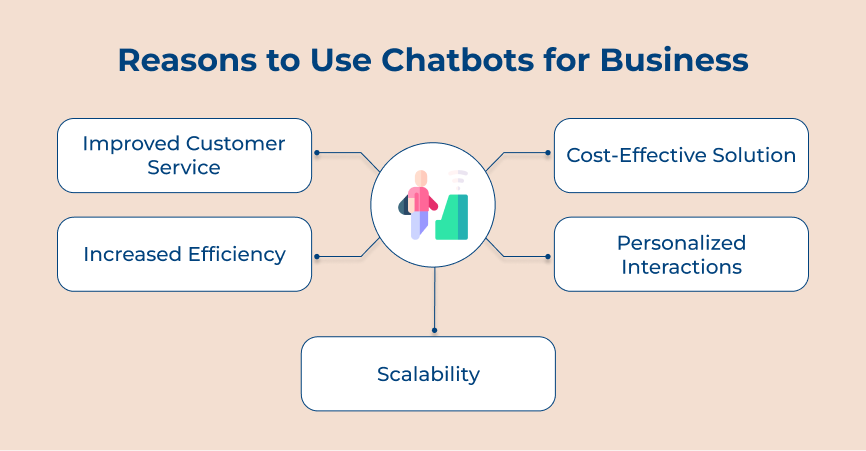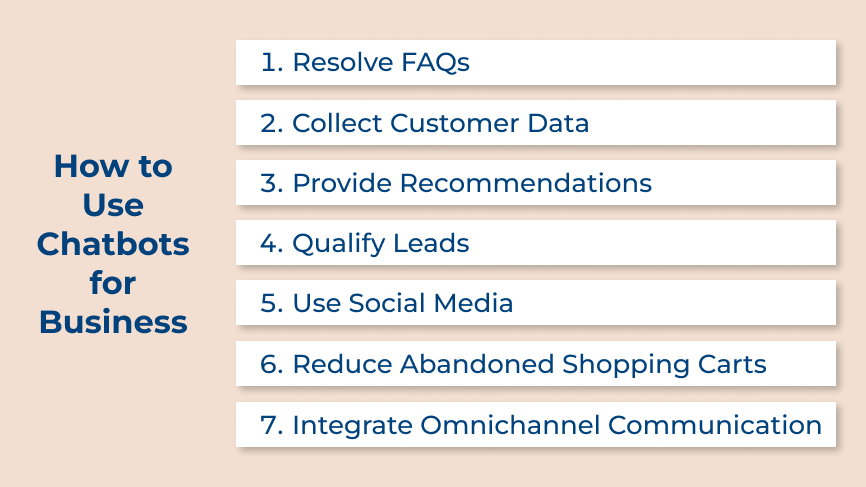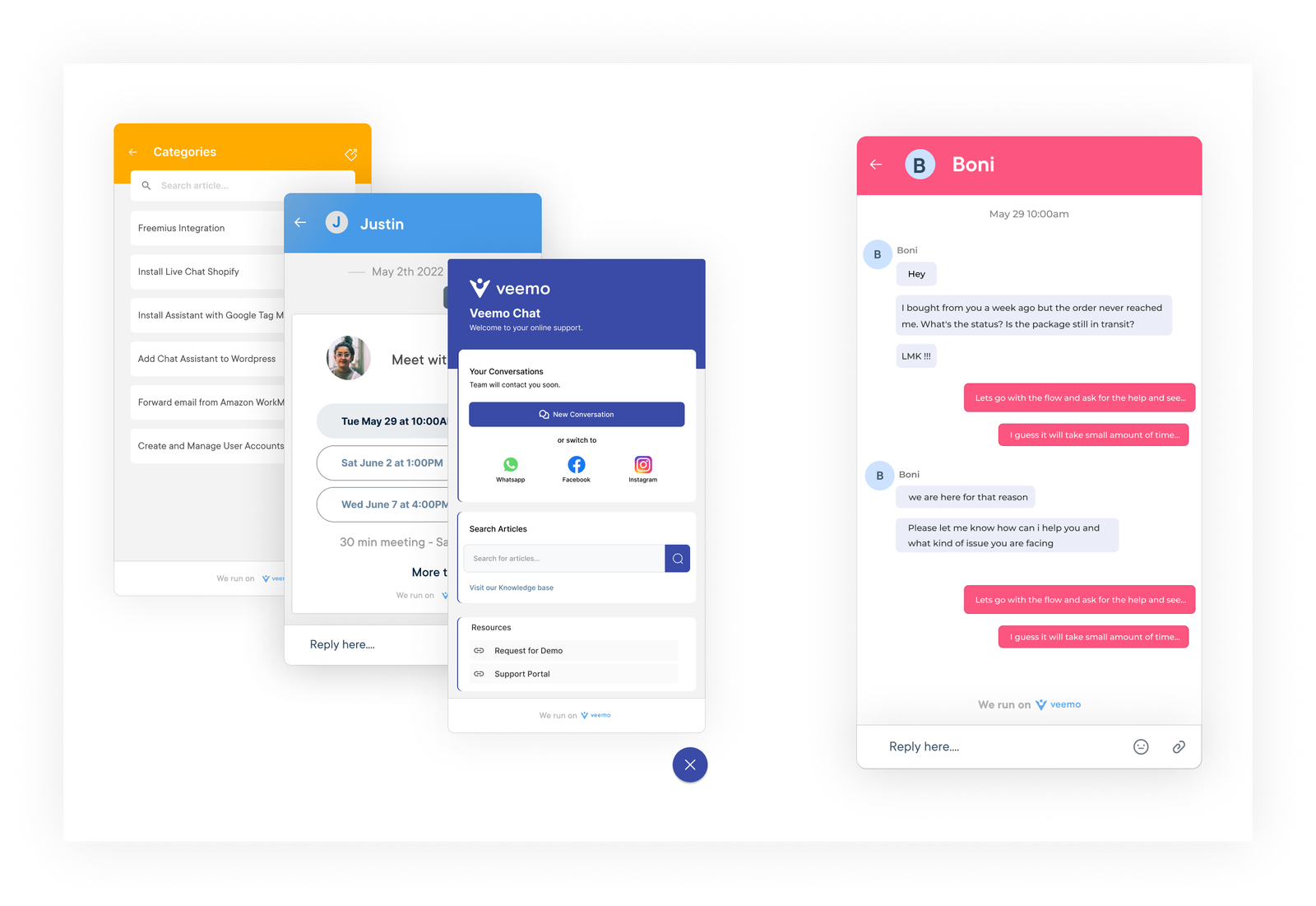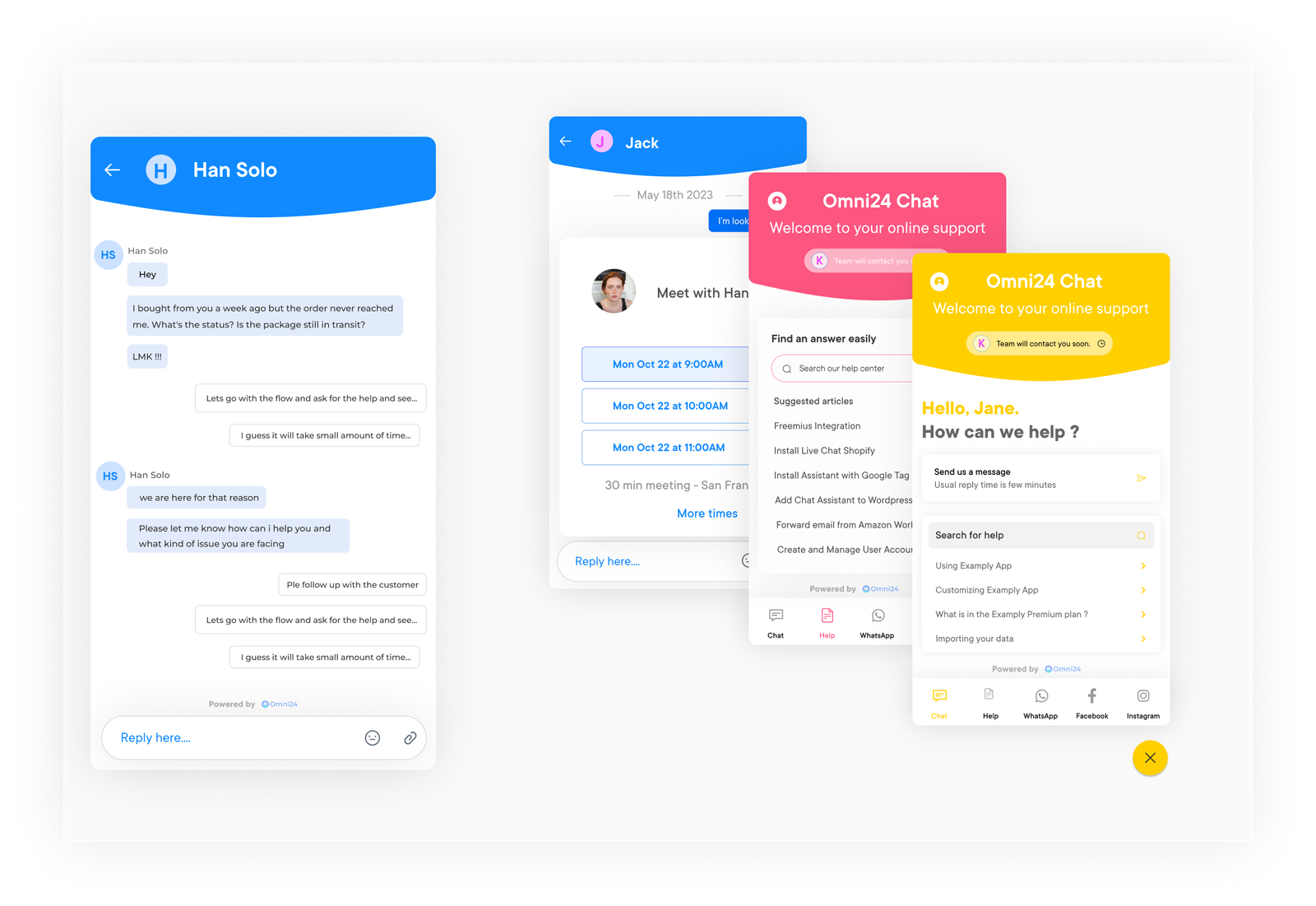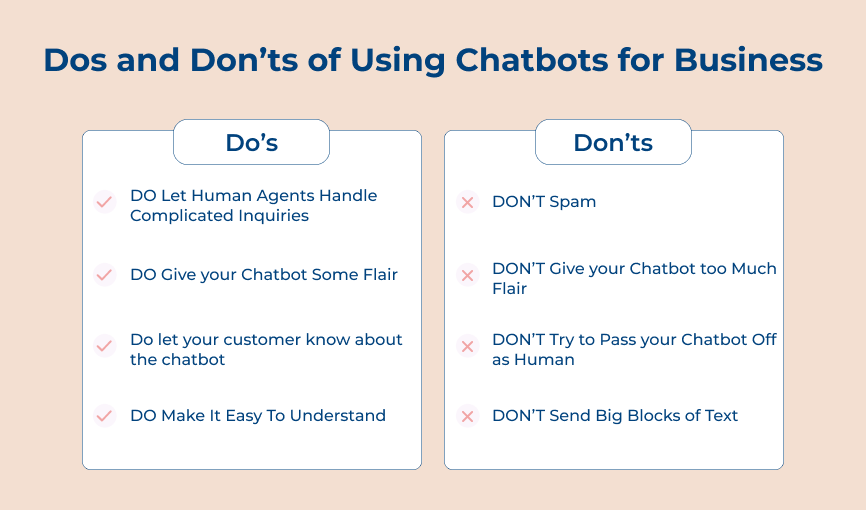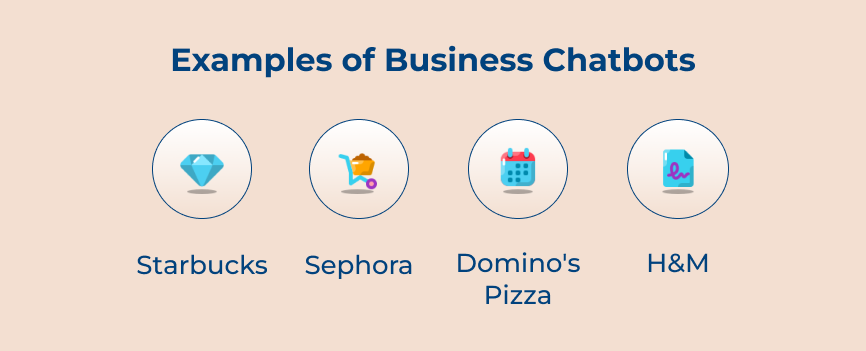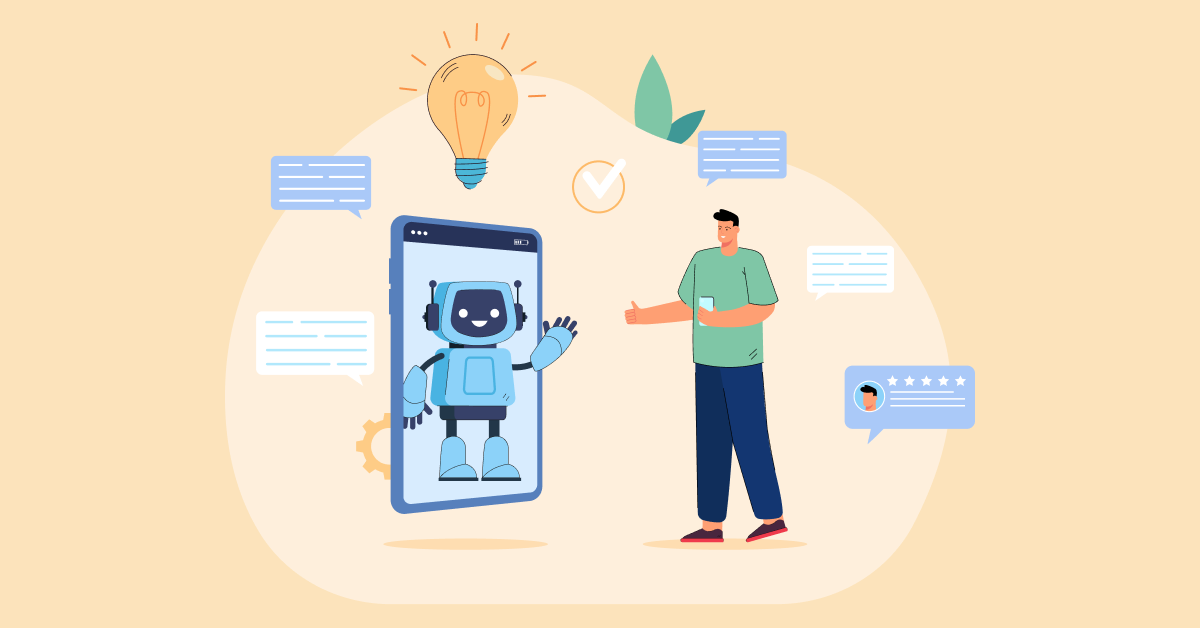1. Use a “Call Center” Chatbot to Resolve FAQs
Chatbots have revolutionized the way businesses interact with customers, particularly when it comes to resolving Frequently Asked Questions (FAQs). Using a “call centre” chatbot can streamline customer service processes and provide quick solutions to common inquiries.
Let’s assume that a customer looking to track their order status can simply type in their order number and receive real-time updates from the chatbot. It eliminates the need for customers to wait on hold or search through a website for information.
Pro tips:
- Regularly update the chatbot’s database with new FAQs and responses to ensure accuracy.
- Personalize the chatbot’s tone to match your brand’s voice and style.
- Use analytics to track customer interactions and identify common pain points that can be addressed through the chatbot.
2. Collect Customer Data and User Feedback
Businesses are constantly searching for innovative ways to collect customer data and user feedback. One of the most effective methods being used is chatbots. Chatbots are computer programs that simulate human touch through artificial intelligence. They can answer customer queries, provide information and even collect valuable data from users.
Businesses can now automate the process of collecting customer data and user feedback with chatbots. Let’s assume that a chatbot on a company’s website can engage with customers, ask relevant questions and gather feedback in real time. It allows businesses to gain insights into customer preferences, behaviour patterns and areas for improvement.
Pro tips:
- Customize the chatbot’s responses and questions based on user behaviour.
- Deploy chatbots on websites, social media platforms and messaging apps to reach a wider audience.
- Use the data collected by chatbots to make informed decisions, improve offerings and enhance the customer experience.
3. Give Personalized Product Recommendations
Chatbots have revolutionized the way businesses interact with customers and one valuable use case is providing personalized product recommendations. Previously, businesses struggled to offer personalized offers, often resulting in generic suggestions. Businesses can now automate the process and offer tailored product recommendations based on customer interactions.
Let’s consider that an online clothing retailer can use a chatbot to ask customers about their style preferences, size and favorite colors. Based on the information, the chatbot can then recommend specific items of clothing that match the customer’s tastes. It leads to a more personalized shopping experience.
Pro tips:
- Gather and analyze customer data to offer highly relevant product suggestions.
- Allow customers to provide feedback on recommendations to improve future interactions.
- Regularly update product recommendations based on customer interactions and feedback to keep them relevant.
4. Qualify Leads With Lead Generation Chatbots
Chatbots have revolutionized the way businesses qualify leads, saving time and resources while improving customer experience. Before the advent of chatbots, businesses had to rely on manual methods such as email or phone calls to qualify leads. It was time-consuming and inefficient.
Let’s assume that a real estate company can use a chatbot on their website to ask potential buyers about their budget, preferred location and other preferences. Based on the responses, the chatbot can provide listings that match their criteria and schedule appointments for property viewings. It not only saves time for the sales team but also provides a personalized experience for the customer.
Pro tips:
- Keep the conversation flow natural and engaging to encourage users to provide more information.
- Use data collected from chatbot interactions to continuously improve and optimize the lead qualification process.
- Integrate chatbots with CRM systems to seamlessly transfer qualified leads to sales teams for follow-up.
5. Weaponize Social Media For Conversational Sales
Weaponizing social media for conversational sales through the use of chatbots has revolutionized the way businesses interact with customers online. Before the introduction of chatbots, businesses relied heavily on traditional methods such as or cold calling to engage with potential customers.
Let’s consider that a chatbot on a clothing retailer’s website can help customers find the perfect outfit by asking about their style preferences and size. It makes the shopping experience more interactive and personalized.
Pro tips:
- Personalize the conversation by using the customer’s name and past purchase history to make recommendations.
- Use chatbots to offer proactive customer service, such as sending order updates or answering frequently asked questions.
- Continuously analyze chatbot performance by monitoring conversations and gathering feedback from customers to improve the user experience.
6. Reduce the Number of Abandoned Shopping Carts
One common challenge that businesses face is reducing the number of abandoned shopping carts on their online platforms. When chatbots were not utilized in the past, customers would often face issues or have unanswered questions while shopping online. It led them to abandon their carts and resulted in lost sales for businesses.
Let’s assume that a customer browsing an online store may have questions about product availability, sizing, or shipping options. A chatbot can quickly provide the information, guide the customer through the checkout process and address any concerns they may have. It can lead to a completed purchase.
Pro tips:
- Personalize the shopping experience by using customer data to tailor recommendations and offers.
- Implement proactive chatbot messages to engage customers and guide them through the purchasing journey.
- Implement proactive chat triggers to engage with customers before they abandon their carts.
7. Integrate Bots for Omnichannel Communication
Integrating bots for omnichannel communication has become a game-changer for businesses looking to enhance customer service and improve efficiency. Businesses in the past relied heavily on human agents to handle customer inquiries and provide support across channels.
Let’s consider that an e-commerce company can use a chatbot to assist customers with product recommendations, order tracking and payment processing. Customers can have a seamless experience regardless of the platform they choose to interact with the business. It can integrate the chatbot across multiple channels such as websites, social media and messaging apps.
Pro tips:
- Ensure chatbots can communicate in multiple languages to cater to a diverse customer base and provide seamless service across different regions.
- Ensure seamless integration with existing communication channels to maintain a cohesive customer experience.
- Integrate the chatbot with your CRM system to track customer interactions and personalize future communications based on their preferences.
Best Chatbots For Business
Choosing the right chatbot for your business is vital to ensure efficiency, productivity and customer satisfaction. Let’s explore the top chatbot solutions that can revolutionize the way you engage with the customers.
1. Veemo
